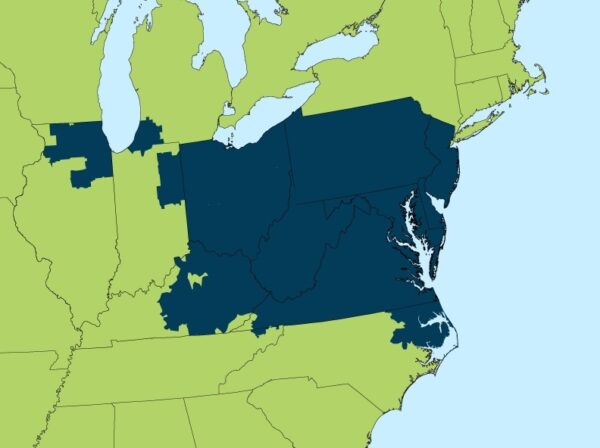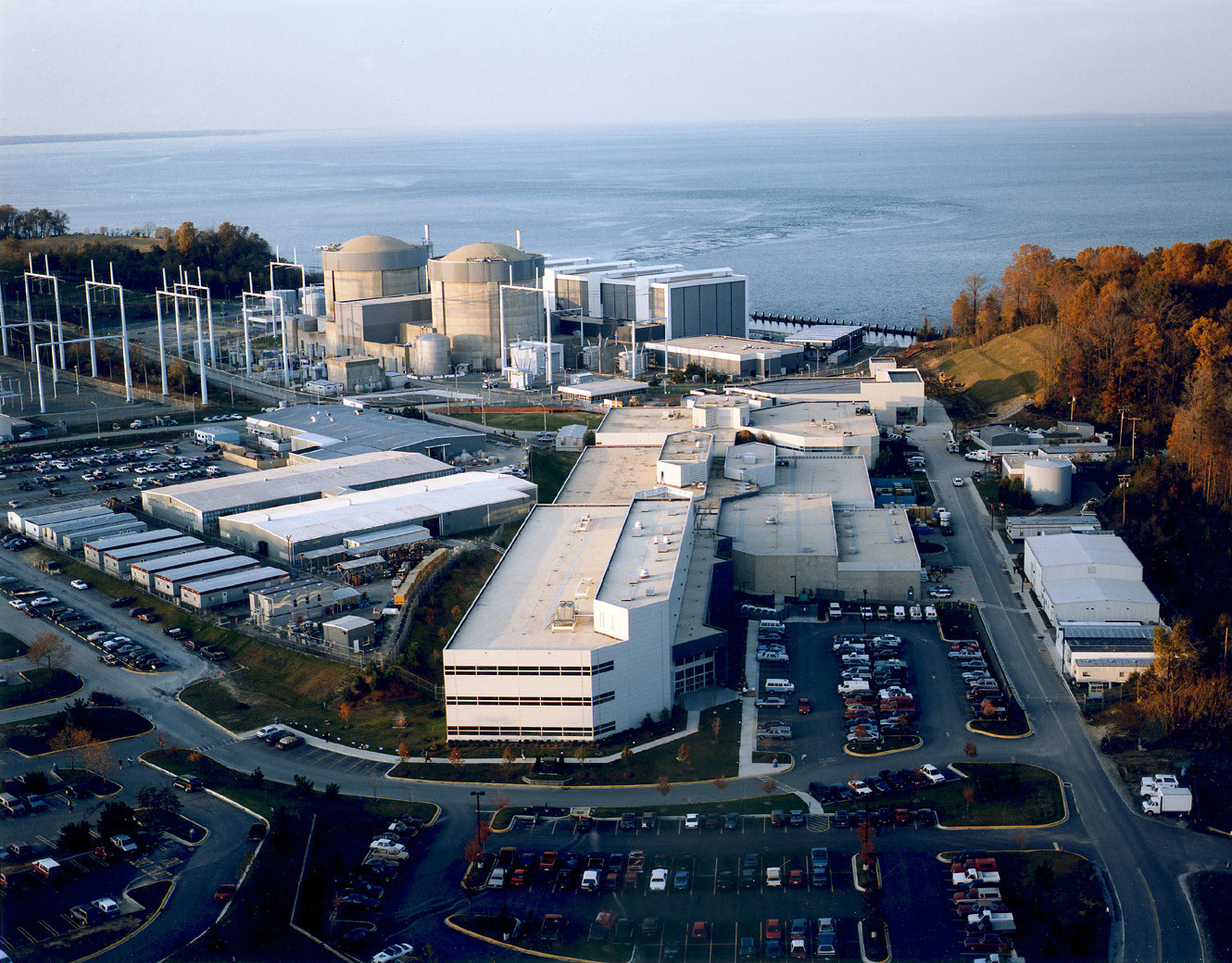Clean power advocates eye grid operator’s planning reforms warily

PJM, the nation’s largest grid operator, is changing how it plans transmission upgrades needed to ensure reliable service for the 65 million people who live in its footprint.
The effort comes after plenty of criticism of how the regional transmission organization, responsible for coordinating the flow of electricity in all or parts of 13 states and the District of Columbia, including Maryland, has traditionally conducted planning. Clean energy advocates and some state regulators are pushing for a more holistic, forward-looking approach that evaluates options besides traditional transmission lines and better incorporates the policy goals of PJM states, particularly those, like Maryland and a handful of others, that have set aggressive decarbonization targets.
Anjali Patel, a consultant for Americans for a Clean Energy Grid, a nonprofit advocacy group, said past transmission planning has put economic needs, reliability needs and state interests in “separate buckets” and has been relatively short-sighted, even though transmission investments can last 40 or 50 years.
“We need more proactive planning,” she said. “PJM is one of the main places that needs to occur.”
And yet some see backsliding in the process to develop the new framework that could imperil states’ goals and waste crucial time.
“It started off going pretty well,” said Tom Rutigliano, a senior advocate for climate and energy at the Natural Resources Defense Council who focuses on PJM. “The fossil fuel states complained. … PJM agreed to plan for a fictional future to appease the fossil fuel states.”
The changes, however, haven’t been finalized, and could be affected by a pending Federal Energy Regulatory Commission rule on transmission planning and cost allocation, said Jeff Shields, a PJM spokesperson.
Why planning matters
In a November letter, the Organization of PJM States, a group of utility regulators from PJM’s territory, wrote that it was concerned about “our region’s reactive stance” amid a major shift in the electric power industry, with infrastructure aging, older fossil fuel plants retiring and power demand climbing.
“Within the PJM footprint, rapid changes in both load forecasts and available supply are creating pronounced grid reliability issues that challenge PJM’s existing planning tools,” the group said. In response, PJM said it “agrees that processes that may have served us well in the past need to continue to evolve to meet current and future needs of the grid.”

The shaded area shows where PJM, a regional transmission organization, coordinates the movement of wholesale electricity. Graphic courtesy of PJM.
How regional transmission organizations like PJM manage power plant retirements, solve the electric capacity problems they create and plan for the future during a time of unprecedented change for the U.S. electric grid can get thorny quickly. But those decisions make a difference on customers’ electric bills and can affect what generation sources come online in replacement, among other impacts.
For a test case on how things can go awry — from the perspective of PJM’s critics, at least — look to Maryland.
The state’s Office of People’s Counsel and the Public Service Commission took PJM to task in complaints to the Federal Energy Regulatory Commission over a suite of urgent transmission projects that PJM approved to fix anticipated electric reliability problems caused by a retiring coal plant about in Anne Arundel County, nine miles southeast of Baltimore. In the complaints, which FERC rejected, they argued PJM shouldn’t have been caught flat footed by the plant’s retirement, which they said will saddle Maryland electric ratepayers with about $786 million in new transmission costs in addition to a pricey “must run” agreement that will keep the Brandon Shores plant burning coal until the projects are complete in about four years.
“PJM’s response to the recently announced retirement of Brandon Shores … illustrates the risks of failing to proactively plan for the retirement of large coal generators,” the Sierra Club’s Maryland Chapter wrote to PJM’s CEO in November.
The Maryland Public Service Commission said that by focusing on a transmission solution, PJM’s process “precludes consideration of viable alternatives, with the prospect of exposing Maryland ratepayers using the transmission facilities to unreasonable costs.” The commission noted that Maryland law requires installing 3,000 megawatts of energy storage, “more than double the Brandon Shores facility’s total capacity.” That storage power, it said, could “possibly negate the need for the PJM-approved transmission upgrade.”
PJM rejected those arguments.
“Protesters suggest that PJM should have acted outside of its clearly defined planning authority and processes; predicted that the Brandon Shores coal-fired units were retiring when specifically told otherwise; and relied on resources and technologies that do not solve the engineering problem,” the organization responded in a filing with FERC. “There is no existing technology that can cure the reliability problems that Brandon Shores will create when it deactivates other than transmission.”
FERC Commissioner Allison Clements, though concurring with the commission’s order approving PJM’s transmission plan, noted that the objections “paint a troubling picture with regard to PJM’s grid planning.”
She questioned whether PJM could have “carried out planning activities sooner and in doing so identified potential solutions that more expeditiously address the reliability need, cost less, or that deliver greater value to customers.”
PJM officials testified before the Maryland Senate Committee on Education, Energy and the Environment in mid-January, asserting that grid reliability is their No. 1 concern.
“There will need to be significant transmission built in order to ensure reliability for consumers,” Asim Z. Haque, PJM’s senior vice president for state policy and member services told lawmakers.
That’s an issue that ratepayers don’t normally think about — unless there are widespread outages or other failures to the electric power system.
“Reliability isn’t typically felt by consumers, but when it is felt, it can be catastrophic to consumers,” Haque said.
But the price tag of regional transmission expansion continues to rankle consumer advocates.
“That’s a major transmission benefit that goes to utility shareholders,” said David Lapp, the Maryland people’s counsel.
‘Really hard for those states to agree’
What some advocates want is a process that allows PJM to work with states and utilities to come up with solutions that better incorporate state policy goals as well as consider lower cost options.
“PJM can’t take an integrated look at how to replace a retiring plant,” Rutigliano said. “Their plan is very rigid, very reactive and doesn’t allow anyone to come forward with better options.”
Rutigliano and others argue PJM doesn’t need to reinvent the wheel, pointing at its regional transmission operator neighbor to the west, the Mid-continent Independent System Operator, which “has been doing long term planning since at least 2011, and has developed a robust planning process that supports utility and state future resource plans while ensuring that consumers benefit from low cost power and high levels of reliability,” NRDC said.
“We hoped it would be something like MISO is doing,” said Jon Gordon, policy director at Advanced Energy United, a trade group for clean energy businesses. “There was a great model out there right next door.”
A crucial difference between MISO and PJM, however, is that PJM does not have the authority to develop or impose cost allocation schemes, since who pays for what can be the biggest sticking point in transmission planning and construction.
Gordon, Rutigliano and others are also wary of PJM’s currently proposed tiered approach, which proposes to weigh three different scenarios for transmission planning. The “base” scenario is focused on reliability and only state public policy goals that deal with forcing power plants into retirement are taken into account, such as Illinois’ Climate and Equitable Jobs Act.
The “medium” and “high” scenarios factor in policies that promote new renewable power. Those scenarios “allow states to voluntarily sponsor additional transmission needs and solutions” through what’s called the “state agreement approach,” in which a given state’s electric ratepayers foot the bill for transmission upgrades needed to accommodate new renewable power sources, as New Jersey did with PJM to meet its offshore wind goals.
In a presentation in November, PJM staff said the organization had fielded concerns “on whether it is appropriate to model, plan and cost allocate all public policy requirements as reliability projects.” Some states have balked at paying for transmission upgrades needed to accommodate fossil plant retirements or renewable energy growth in others.
The majority of PJM states, for example, agree that the costs of one state’s public policies shouldn’t be paid by electric customers in other states, the National Association of Regulatory Utility Commissioners wrote in comments filed with FERC.
“PJM is challenged in that the states that make up PJM have very different policy goals,” Gordon said. “In MISO states agreed on cost allocation policies that made the MISO process work better. … We have some states in PJM that are really progressive clean energy states and we have states that are really closely aligned with fossil interests. When you get into cost allocation it’s really hard for those states to agree.”
‘Cautiously optimistic’
However, experts like Rutigliano fear that siloing off state policy goals could lead to duplicative building of transmission infrastructure, since PJM would only be looking at the loss of fossil fuel plants and failing to seriously consider the renewable power that would replace them.
“That’s one of our big worries,” he said. “They’ll build new transmission to make up for the void rather than acknowledging or building the transmission for the clean replacements. .. The cost allocation for clean energy projects shouldn’t be punitive.” It also forces one state’s electric ratepayers to cover costs for transmission that can have benefits beyond its borders.
Patel, the Americans for a Clean Energy Grid consultant, also said state policies need to be better incorporated into PJM planning.
“They’re policies of the utilities operating in PJM, they’re the policies of the businesses operating in PJM,” she said. “These interests cut across partisan lines and cut across our economy.”
However, she’s more sanguine on the progress PJM is making.
“We’re cautiously optimistic this can move us in the right direction,” she said.
Josh Kurtz contributed to this report.




 Creative Commons Attribution
Creative Commons Attribution